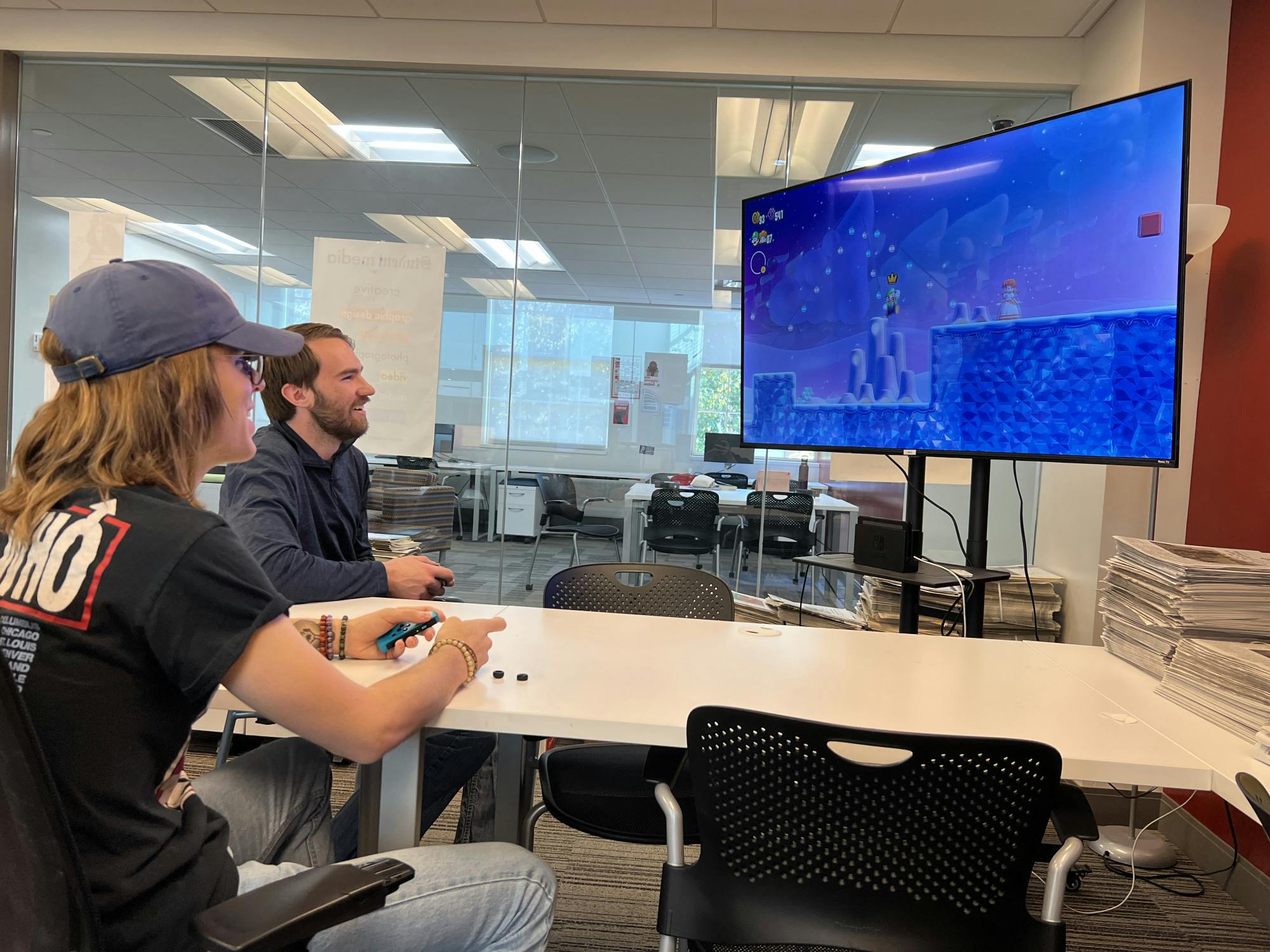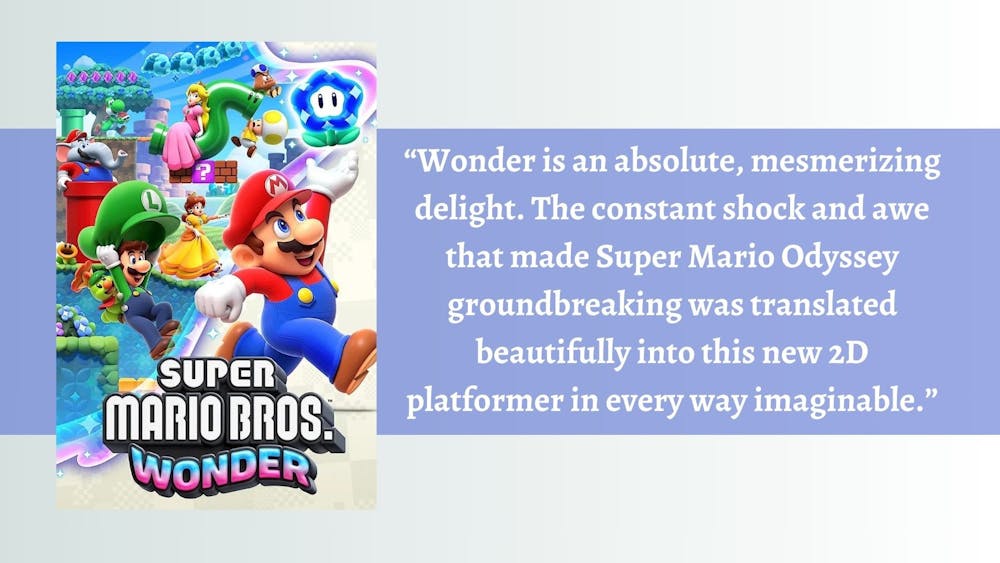In 2017, Nintendo released the Nintendo Switch. Along with the device, the company released two games the same year that were considered some of the best in their respective series: The Legend of Zelda: Breath of the Wild and Super Mario Odyssey.
Six years later, Nintendo has blessed and impressed us with new entries in both the Legend of Zelda and Mario platformer series. While the former, Tears of the Kingdom, released this spring and followed the format of its predecessor, Super Mario Bros. Wonder came out Oct. 20, completely reinventing the series from the ground up.
The Super Mario Bros. series has been due for a good 2D platformer for a while. Fans suffered through the New Super Mario Bros. games on Wii and the DS systems for 17 years. Each installment was plagued with boring and formulaic design, clearly feeding off an audience Nintendo thought wanted more of the same. The last innovative, genuinely fun entry in the series came in the ’90s with Super Mario World, one of the series’ highest highs.
After nearly two decades of a painful cycle of crap (much akin to the experience Pokémon fans have been having for even longer), Nintendo finally let its creative side loose with Wonder, creating a new, stylized game that innovates and surprises at every turn.
Simply put, it blew us away.
Wonder is an absolute, mesmerizing delight. The constant shock and awe that made Super Mario Odyssey groundbreaking was translated beautifully into this new 2D platformer in every way imaginable.
From the moment you start playing (as one of eight unique and 12 total playable characters), the game instantly throws new experience after new experience at you. The elephant power up, which transforms most characters into a large elephant, is the first in a long series of fantastical elements all combined to make an entirely unique experience that, without Mario branding, would feel like an entirely different game.
Most Mario games involve some thoughtless story involving Bowser kidnapping Princess Peach, rendering Mario the only one able to save her. This time around, Wonder has a whole new take on the now-classic progression in the Flower Kingdom (notably not the Mushroom Kingdom): Bowser becomes the castle.
Mario and his gang of characters stumble upon this all-new kingdom prior to Bowser’s attack. The kingdom is inhabited by “Poplins,” humanoid flower people. Prince Florian, a royal Poplin, tasks Mario and friends with helping him take back the prince’s castle.
To weaken Bowser’s grip on the kingdom, the player must get Wonder Seeds, which can be found by collecting Wonder Flowers. When a character gets a Wonder Flower, the game instantly morphs into an acid trip — if Nintendo designed acid trips.
This new mechanic breaks all formulas from previous 2D Mario games and gives players the chance to explore previously unseen parts of every single level, collect a swath of items and find new paths to secret levels and worlds.
Enjoy what you're reading?
Signup for our newsletter
Needless to say, Wonder is the first 2D Mario game since Super Mario World to actually feel new.

Digital managing editor Luke Macy and opinion editor Devin Ankeney play Super Mario Bros. Wonder on the Nintendo Switch.
One of the latest features here is the badge system, allowing Mario and friends to pick a special ability to use throughout the level thanks to Prince Florian. Abilities range from giving you a power-up mushroom at the start to giving you a few extra moments to jump as you fall. They’re fun to experiment with, although we recommend primarily sticking with the first ability, which lets you use your cap as a glider while you float gracefully to the ground.
The game also adds countless new species of enemies and characters to find and interact with scattered all over the place. From bull-like Bulrushes to extremely rotund and bouncy hippo-shaped Hoppos and ground squirrel-like Skedaddlers who love to run away from you in terror, Wonder fully reinvents the universe in which Mario explores. (By the way, those new characters can all be found in just the first five levels alone.)
Similarly to how Super Mario Bros. 3 felt like a Mario play with its curtain title screen and level staging, Super Mario Bros. Wonder feels like the musical of the series. Not only does it dazzle with the same colors and designs that Broadway would, but it also uses music to perfection to craft its levels: Cymbals crash as you slam to the ground, enemies sing in certain levels and the music draws from past entries’ greatest songs.
The only caveat to a whole new soundboard of melodies and effects is that the simple jump sound can get fairly aggravating after a while. With so much going on visually and sonically, though, this doesn’t tend to bother all that often.
The game is packed with unique levels, and the game does a great job making you work to find them. Plus, there’s so much to see in each level, and the lack of a timer gives plenty of room to explore. Having already played this game for hours, we’ve barely made it to the third world.
It’s not rare to call a Mario game good, but this one’s different. In a world where 3D action games reign supreme, Wonder is a delightfully-stylized large-scale platformer that made us feel like kids again.
Rating: 9/10




